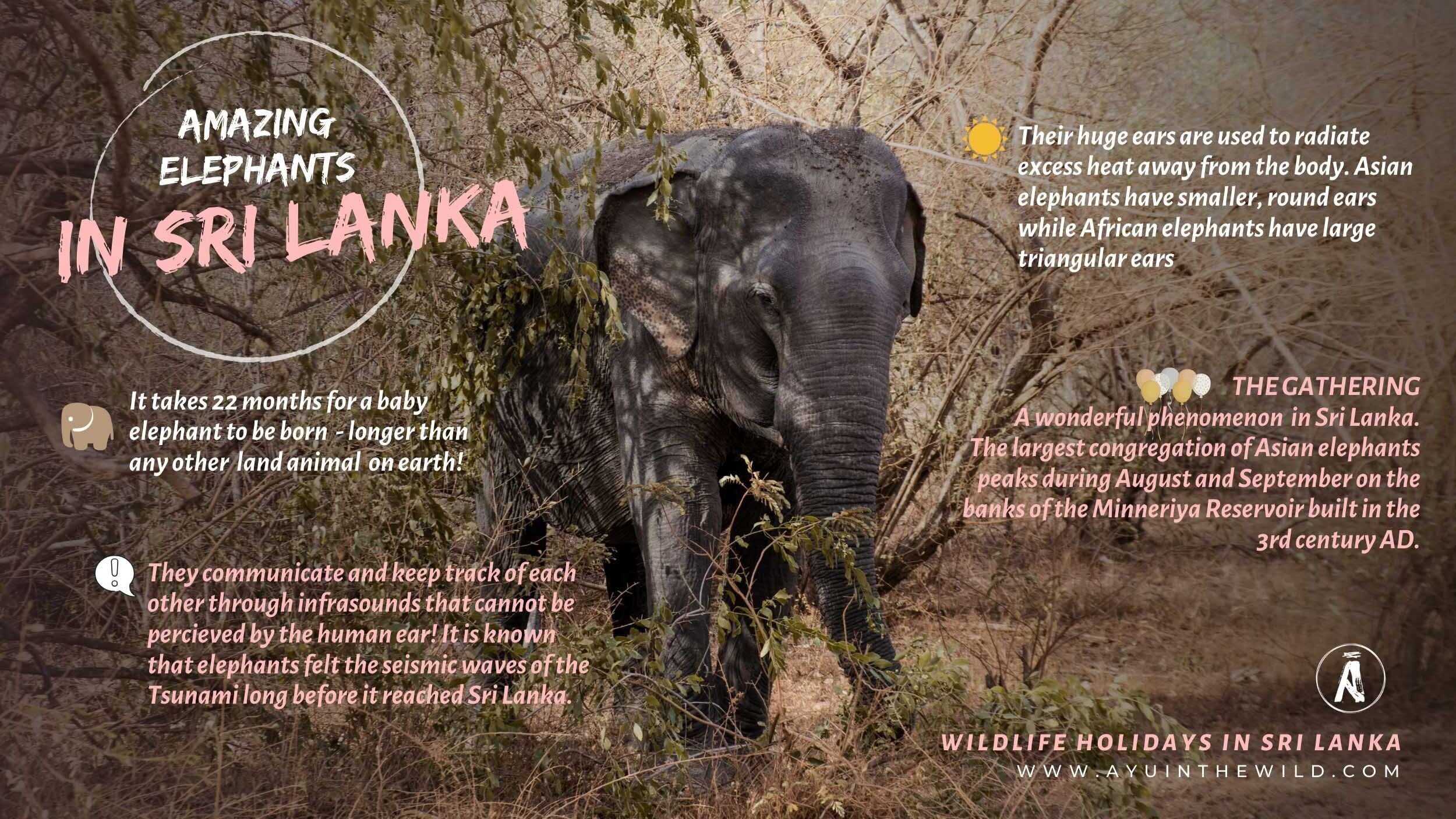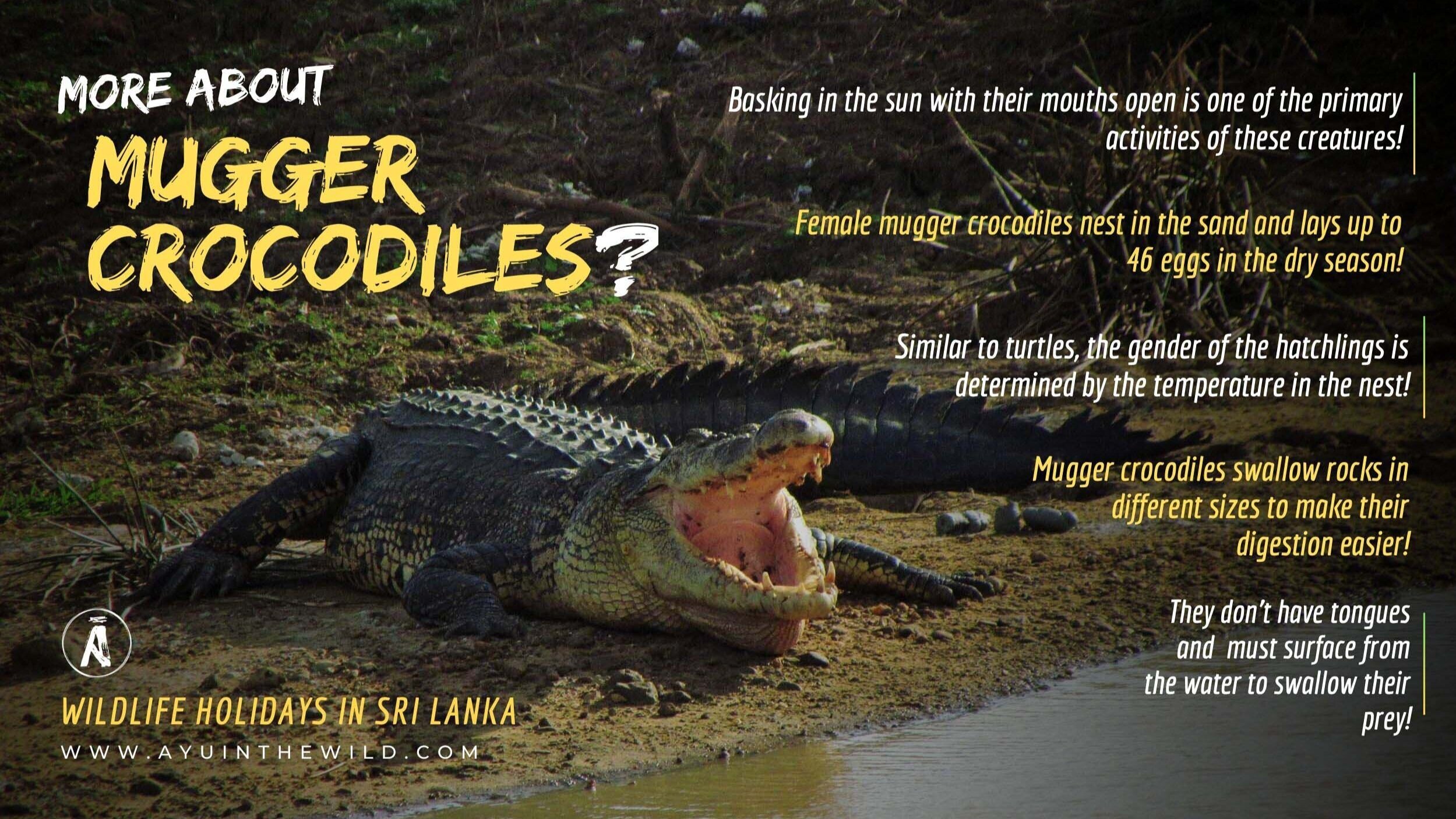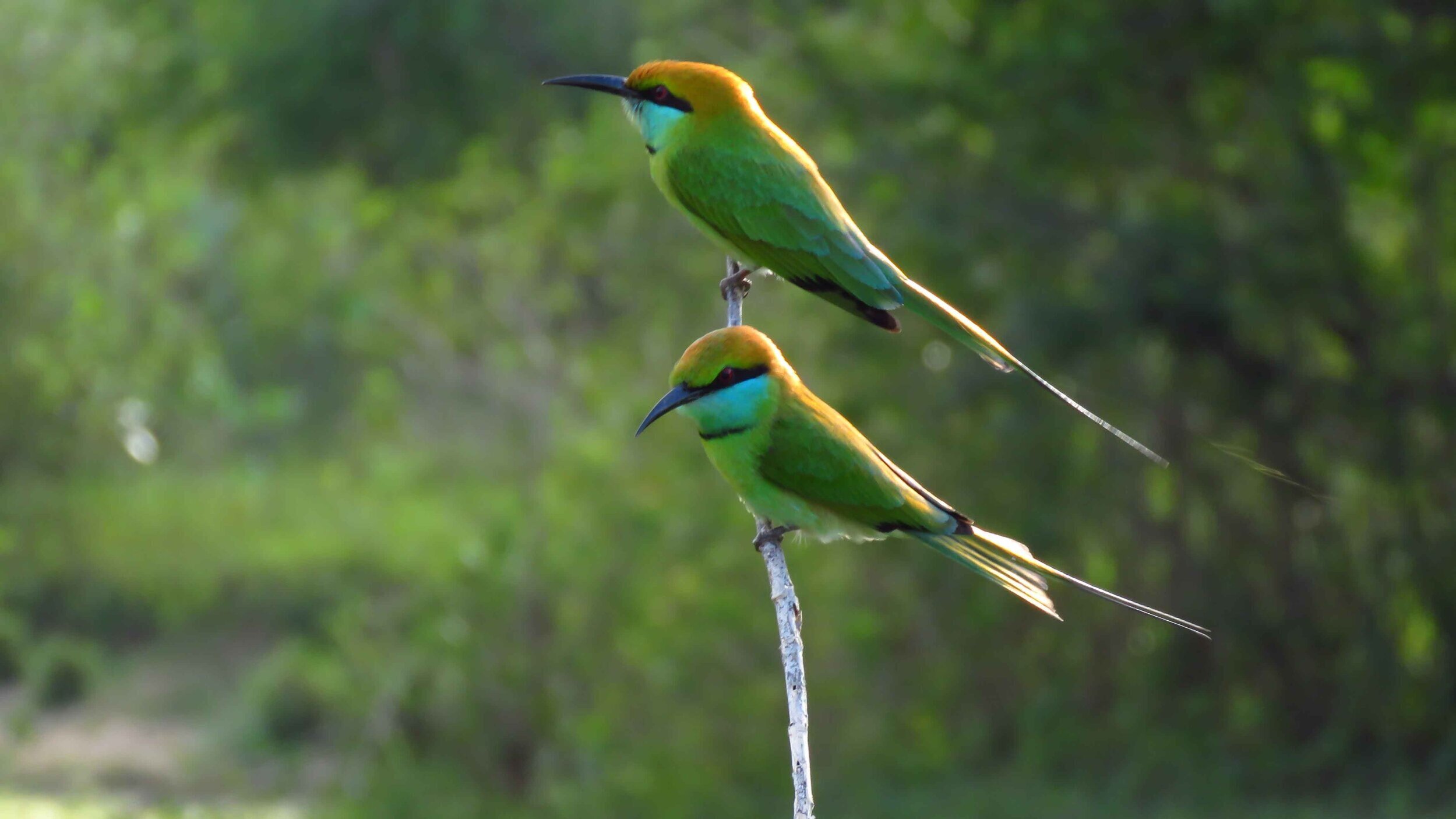10 Most Often Seen Animals Among the Amazing Wildlife in Sri Lanka
If there was one silver lining amidst the lockdown due to COVID-19 in Sri Lanka, its the chance for Sri Lankan wildlife to reboot, reclaim and relax.
Sitting to the Southwest of the Bay of Bengal surrounded by the swirling warm waters of the Indian Ocean, Sri Lanka has claimed global fame for centuries for her rich heritage and culture, heavenly food, tranquil beaches, sprawling tea plantations and its astounding variety of wildlife. The island’s beguiling beauty has attracted visitors in droves in recent years. With Sri Lanka named as one of the top destinations to visit in 2019 and 2020 by the likes of CNN, Conde Nast Traveller, Lonely Planet and Forbes, the island’s main National Parks have at times suffered the consequences of over tourism and challenges to prioritize conservation regulation. Tourism in Sri Lanka was just beginning to pick up pace in early 2020 after the setback of the Easter attacks in April 2019, when the global Corona virus pandemic halted the recovery on its tracks. While the industry is facing its toughest battle for survival in the face of this double blow, the wildlife is rebooting inside silent parks. isolated water holes and empty jungle roads.
Why is Sri Lanka a Top Choice for a Wildlife Safari
It’s one of those unique countries which is small, bio-diverse, has two monsoons and makes a perfect recipe to be the best wildlife destination outside Africa. Sri Lanka’s landmass is just over three times the size of Kruger National Park in South Africa but it has one of the highest rates of biological endemism in the world. With 26 National Parks, 33 endemic species of birds and 21 endemic mammals among countless other wild animal species, game drives in Sri Lanka’s popular National Parks like Yala, Udawalawe and Minneriya tempt safari goers with an incredible species density per square kilometre.
Guests can safari on this 25,000 square mile jewel with Ayu in the Wild exploring magnificent plains to spot playful herds of elephants in the wild gathering at a water hole. Or watch leopards hunt their prey with insights from intriguing guides. Explore the deep seas on a Yacht to spot Blue Whales, Sperm Whales and Spinner Dolphins. Trek through virgin rainforests on birding expeditions or enjoy the luxury of tented campsites after a day out searching for an elusive sloth bear.
Here are 10 animals that you’re nearly guaranteed to see on your Sri Lanka wildlife tour!
Elephants
Characteristics and Behaviour
Being a sub species of the Asian elephants, these gentle giants are herbivores who spend their time roaming around an average of 25 km per day in herds ranging from 6 to even a 100.
Did you know?
They are considered to be intelligent with a great memory of a span of many years! These are sensitive creatures who even display emotions such as grief and mourn the death among them by covering the carcass with leaves, sand and branches. Interestingly, they communicate through low frequency sounds known as infra sounds that cannot be perceived by the human ear. Where a herd of elephants are about to cross a road, the presence of vehicles will be identified by the matriarch of the herd through the vibration felt by its trunk placed on the ground.
When and Where to Spot Elephants on Your Wildlife Tour to Sri Lanka
They can be spotted abundantly at the Udawalawe National Park throughout the year. During April to September, elephants begin to gather in the parks within the north central province and congregate in their hundreds on the banks of the beautiful Minneriya National Park between July and August for the world famous ‘Gathering’ billed by the Lonely Planet as one of the world’s greatest wildlife spectacles. During this period, herds are also spotted at the Kaudulla National Park and Kala Wewa National Park.
IMPORTANT: Never ride an elephant in Sri Lanka as they are tortured to become a tourist attraction.
Spotted Deer
Characteristics and Behaviour
The spotted deer, is a subspecies of the axis deer and are found in groups of around 10 to 60 headed by one or two male deer, or in small groups of 3 to 5 mature male deer often called ‘bachelor herds’. The spotted deer can be found in many parts of the country except in the central highland hills in Sri Lanka. Their diet consists of any vegetation that also includes remnants of fruits eaten by langurs which probably explains the symbiotic relationship with grey languars who depend on the alarm call of the spotted deer to avoid predators. When lingering in herds, the spotted deer tend to stick together making it difficult for predators to focus on a single target. While they are considered to be a supreme prey for the Sri Lankan leopards and mugger crocodiles, they are also a prey for jackals and sloth bear!
When and Where to Spot?
The spotted deer can be found in herds inside thick forests, open areas and mostly near water holes towards early mornings or evenings especially in Block 1 and Block 5 of the Yala National Park and in Wilpattu National Park. Smaller herds are found in many other National Parks across the island.
Mugger Crocodile
Characteristics and Behaviour
The second largest land reptile in the world, muggers are also known as marsh crocodiles and are a species that has been listed as vulnerable. Although mugger crocodiles are considered to be medium sized in comparison to other species, they possess the broadest snout among crocodile species. Shaded in dark olive, grey and brown, they are known to be more active and aggressive in the night.
Their prey can vary from a frog to a buffalo calf depending on their size and prey on spotted deer who are drawn near water holes. A rather strange characteristic among these crocodiles is that they swallow rocks in different sizes depending on their maturity to aid digestion.
When and Where to Spot?
Mugger crocodiles can be spotted in freshwater habitats such as lakes, rivers, tanks, swamps and marshes. The best time to observe Mugger crocodiles in Sri Lanka is during the dry season from May to September and are almost guaranteed to be spotted on wildlife safaris inside Yala National Park as well as the Kumana National Park. They are not frequently spotted during the rainy season.
Wild Boar
Characteristics and Behaviour
These scavengers are found in shades of black and grey and weigh around 40 to 90 kg. It has been observed that the female wild boar’s tusks are predominantly visible although both male and female wild boar possess tusks which predators such as leopards and crocodiles find quite intimidating. However, even though male wild boar spend their time in isolation, female wild boar live in small groups along with their off spring. A female wild boar gives birth to a dozen piglets the first time and subsequently each litter decreases by one.
When and Where to Spot?
Scrub-lands can be considered as the most preferred habitats of wild boar along with less dense woodlands. The best time to spot them is during the rainy season at Kumana National Park as well as in block 1 of the Yala National Park.
Water Buffalo
Characteristics and Behaviour
These formidable mammals use their horns as a defensive mechanism to fight off leopards and other predators. Female water buffalo have longer horns while males have stronger and broader horns. The excessive amount of time spent in water is due to the increase in their body temperature as a result of their efficient digestive system and high metabolism. Water Buffalo lack teeth on their upper jaw and have a stomach that has four separate sections. They feed primarily on grass, herbs and aquatic plants and are ruminants.
It has been observed that a majority of the water buffaloes in Udawalawe and Minneriya National Parks are domestic wild buffaloes who have escaped from the domesticated herds and having spent 2-3 generations in wild habitats, their horns have developed to become larger due to unlimited grazing time in the wild.
When and Where to Spot?
Due to the substantial time they spend submerged in muddy water wild buffaloes could be widely spotted throughout the year in close proximity to water bodies inside the Kumana National Park, Block 1 of the Yala National Park, and in Udawalawe and Minneriya National Parks.
Land Monitors
Characteristics and Behaviour
These lizard-like creatures who weigh over 10kg could be found almost anywhere in Sri Lanka! They possess hard bones, rough skin and are excellent climbers where despite their size are able to climb a vertical tree trunk with ease. Land monitors often become prey to leopards but it has been observed that leopards develop bouts of coughing and vomiting subsequent to devouring this prey.
Did you know they are considered to be important biological controllers of agricultural pests as they feed on enormous quantities of ants, snails, scorpions, beetles and other small invertebrates.
When and Where to Spot?
Land monitors can be observed on a wide range of habitats from farmlands, rain forests, dry open forests to desert fringes. They could be easily spotted at Block 1 of the Yala National Park mostly during January and February months of the year where the humidity is relatively high and in almost all National Parks.
Peacocks
Characteristics and Behaviour
This magnificent bird is native to India. They feed on fruits, seeds, insects, mammals and even reptiles and have an average lifespan of 20 years! The most alluring feature of the male birds is the contrasting scaly bronze-green feathers with black and copper markings that end with elaborated ‘eye-spots’. Only males carry this plumage which they fan out when it’s time to impress the ladies! This breeding plumage is plucked off after the breeding season as it is too hefty for them to fly and escape from predators. When alarmed their necks swell up perceptibly and it could be a sign that a predator such as a leopard may be nearby. Gear up to capture perfect angles of this flamboyant fowl on your wildlife photography tour in Sri Lanka!
When and Where to Spot?
If you’re lucky you may see one strolling down the road on a drive towards your southern stays in a holiday to Sri Lanka. These shy animals can be observed throughout the year in Block 1 and Block 5 at the Yala National Park, Kumana National Park, Udawalawa National Park and Wilpattu National Park.
Grey Langurs
Characteristics and Behaviour
Out of the five species of primates in Sri Lanka, four among them are endemic although the Gray Langur could be found in India, Bangladesh and Pakistan. They are very territorial and don’t leave their waterholes, but are willing to share them with Red Faced Torque Macaques with whom mutual grooming also tend to occur. Found in troops of 5 to 50, Langurs use fruits, roots, seeds, moss, bamboo, herbs and grass, lichen, spider webs and termite mounds for sustenance.
When and Where to Spot?
They spend most of their time either foraging on the ground or on trees and in rainforests. They can be widely observed near water holes in the dry season and on trees bearing fruits during the months of March, April and May in Block 1 and 5 of Yala National Park and Kumana National Park.
Red Faced Toque Macaque
Characteristics and Behaviour
In case you were wondering, the name ‘torque’ was given to these primates as a result of its hair on his head being shaped in a circular whirl protruding outward from a central spot on the crown that is similar to ‘torque’ hats that were worn by women in the 16th century! Toque Macaques are endemic to Sri Lanka and include 3 subspecies; Macaca sinica sinica in the dry lowlands, Macaca sinica opisthomelas in the montane rainforests and Macaca sinica aurifrons in the wet zone. Unlike other monkeys’ macaques swim and dive in water to search for yams of submerged aquatic plants. This endemic primate lives in troops of 8 to 40 and feed on fruits, seeds, tree flowers, buds, and leaves and supplemented with birds, lizards and small invertebrates. Female monkeys with red faces are considered to be more attractive and are believed to have better food and habitats.
When and Where to Spot?
Toque Macaques are seen mostly in forests and trees throughout the year at Block 1 and Block 5 of Yala National park, Minneriya National Park, Kaudulla, Udawalawa and Kumana National Parks but can easily be observed at the UNSECO World Heritage Sites of Sigiriya, Polonnaruwa and Anuradhapura.
Green Bee Eater
Characteristics and Behaviour
Sri Lanka is considered a bird watching hotspot among ardent ornithologists and even a short birding trek with an Ayu in the Wild Naturalist is one of the best things to do whilst in Sri Lanka! Observe the beauty of the spectacular shades of the Green Bee Eater’s rufous washed green blackishly tipped tail and the bright green plumage tinged with blue! Before feeding on bees, wasps and ants Green Bee eaters remove the stings of its prey and break the exoskeleton.
They nest along sandy banks with sharp drops as these locations are unreachable for predators like mongoose and land monitors.
When and Where to Spot?
Green Bee Eaters can be observed throughout the year in Wilpattu, Udawalawa, Minneriya, Kaudulla National Parks as well in Kumana National Park which is ideal for bird watching in Sri Lanka.
Enquire for tailor made wildlife holidays in Sri Lanka. Our Guides love to tell you the most amazing wildlife stories!

















